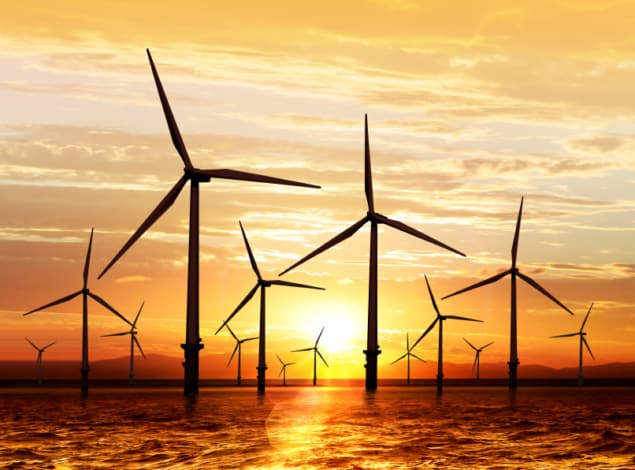
Offshore wind farms may have a greater capacity for coastal protection than first imagined. Scientists had shown previously that arrays of turbines placed in the sea may buffer storm surge and flooding. Now simulations featuring data from Hurricane Harvey suggest that smart wind farm designs have the capacity to protect coastlines from heavy rains.
The researchers, based at the University of Delaware, US, considered six hypothetical wind farm arrays along the coasts of Texas and Louisiana, comparing outputs from the model to a control case where no turbines were deployed. The arrays differed in their turbine size, spacing and site location, among other factors.
The team knew from earlier studies that winds slow down in the vicinity of offshore turbine arrays. “You can picture a scene where moisture is ‘squeezed out’ of the hurricane upstream of hitting land as winds converge at the offshore site,” says Cristina Archer. “But there’s also a second effect that occurs downstream of the farm where winds pick up again, which causes the storm winds to diverge, further reducing precipitation.”
It was important in this first step of the research to confirm this behaviour so that researchers and planners can dig deeper into future designs. Ideas on the table include adjustable turbine blades that could lengthen or shorten depending on whether the objective is energy extraction or storm protection. There’s also more to discover regarding the optimum layout of an offshore array, balancing energy generation efficiency against the performance of the wind farm as a weather defence.
One way to marry the two functions would be to make the setup dynamic. “With floating turbines, you could even think of moving them strategically closer or further apart and varying their distance from the coast depending on the weather,” adds Archer.
In all the group’s simulations, the presence of an offshore wind farm reduced precipitation inland and increased rainfall out at sea. However, the scale of the reduction varied with the layout and location of the turbines.
The most widely-spaced array modelled by the team still featured thousands more turbines than the largest array in use today, making the scenario appear somewhat futuristic. But the researchers acknowledge this and are keen to offer more practical advice.
“The next phase of this study will identify the smallest array size that still has significant benefits, focusing on the optimal layout that would maximize this benefit while, at the same time, minimizing the turbine installation costs,” writes the team in Environmental Research Letters (ERL).
There’s also scope to link the analysis to an ocean model to investigate properties such as surface stress, currents, vertical mixing, sediments and wave behaviour.



